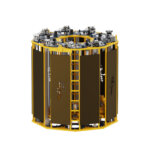CEOs Spotlight Challenges Ahead of Emerging U.S. Rare Earth Industry
Government support is needed to grow a U.S. network of mines and processors critical to national security, experts testify before the House Small Business Committee this week.


Government support is needed to grow a U.S. network of mines and processors critical to national security, experts testify before the House Small Business Committee this week.
In a 1992 speech in Jiangxi, China, Deng Xiaoping declared that “the Middle East has its oil, China has rare earths.”
Rare earth elements are 17 heavy metals that are key inputs for catalysts, permanent magnets, fiber optics, and lighting displays, which make them vital components of virtually all modern defense, energy and technology products. China controls the entire supply chain for rare earth elements, producing 90% of the global supply of rare earth magnets. In April, China halted the export of heavy rare earth magnets, and by the end of May, China’s total volume of rare earth magnet exports to the U.S. had dropped by 93%.
On June 24, the House Small Business Committee held a hearing Securing America’s Mineral Future: Unlocking the Economic Value Beneath Our Feet, to discuss the important role small businesses can have in growing the critical minerals industry, specifically though the domestic extraction and production of rare earth elements.
CEOs of small businesses and start-ups in the critical minerals industry testified about a variety of problems facing domestic producers, the most crucial issue being China’s deliberate and frequent price and market manipulation. Ken Mushinski, president and CEO of Rare Earth Resources, explained that “Chinese dominance and manipulation of the rare earth extraction, processing and separation, and permanent magnet production is an existential risk to our modern world. This dominance allows China to influence global prices, making it risky for competitors to invest.”
According to the Center for Strategic and International Studies (CSIS), the price of components for NdFeB magnets, a commonly used rare earth magnet, has dropped below $60 per kilogram, making half of all global production efforts economically unviable. Completed projects are also often derailed by market manipulation, such as the Mountain Pass Rare Earths Mine and Jervois Idaho Cobalt Operations, which were shuttered in 2015 and 2023 respectively, due to collapsing prices.
This week’s hearing made a clear statement about the bipartisan consensus in Congress that the U.S. must act decisively to establish a resilient domestic supply chain for critical minerals but highlighted that there remains a wide variety of priorities and interests within the sector.
Rep. Roger Williams (R-Texas), the chair of the committee, highlighted that President Trump recently signed Executive Orders 14241 and 14285, which aim to expand and prioritize domestic efforts to extract critical minerals. He also highlighted the need to streamline the permitting and environmental review process, which is onerous, time consuming, and often involves several executive agencies and departments. Harvey Kaye, the Executive Director of U.S. Critical Materials Corp. begged the committee to “cut the red tape and unchain the American entrepreneurial spirit.”
Rep. Hillary Scholten (D-Mich.) called for government action to bolster America’s rare earths industry, declaring that “Democrats stand ready to defend and expand upon the massive long-term investments the federal government has already made in this space.” She pointed to Inflation Reduction Act and Infrastructure Investment and Jobs Act appropriations for grants and loans through the Departments of Defense and Energy as well as the Small Business Administration. Rare Earth Salts, whose CEO Aaron Dowd testified, received funding through the Defense Production Act, part of a $493 million effort to establish a domestic supply chain “from mine to magnet.”
The CEOs concurred and highlighted the need for government action to stabilize the market and to signal and ensure demand. One proposed move — creating and expanding government stockpiles of key minerals — was supported by industry and Congress as a means of ensuring stable and consistent demand, and prompting new private investment.
A 2019 report by the U.S. Army found that “China is less burdened with environmental or labor regulatory requirements that can greatly increase costs,” which lowered their costs, allowing them to dominate the market for decades despite the significant ecological and environmental damage to water and soil caused by radioactive and chemical leaks.
“China’s current market dominance stems from their large-scale use of solvent extraction, which was developed and implemented in the U.S. in the 1960s,” Dowd said.“These processes require hundreds of separation stages and generate excessive chemical waste. Western companies utilizing this proven method face higher costs due to necessary environmental and worker protections,“This cost differential has created a market failure where western innovation cannot compete with Chinese production despite superior technology and environmental stewardship.”
Dr. Laura Stoy, CEO of Rivalia Chemical, explained that policy must address the entire supply chain, specifically midstream production, because “if we have dozens of mines but still have to export our concentrate, we haven’t solved anything.” Schlolten condensed this complex problem into a single statement: “We can’t mine our way out of our critical mineral needs.”
American small businesses are researching, investing and producing innovative new technologies and processes to compete. All four CEOs testified that their new separation processes were more sustainable and that their companies had better labor conditions than their Chinese competitors. Additionally, innovative efforts to implement a circular economy could meet nearly one quarter of the projected demand for rare earths. Stoy emphasized the environmental and logistical benefits of advanced recycling, such as her technology to recover rare earths from industrial waste, including mine tailings, gypsum, and the 11 million metric tons of U.S. coal ash.
What's Your Reaction?

























































